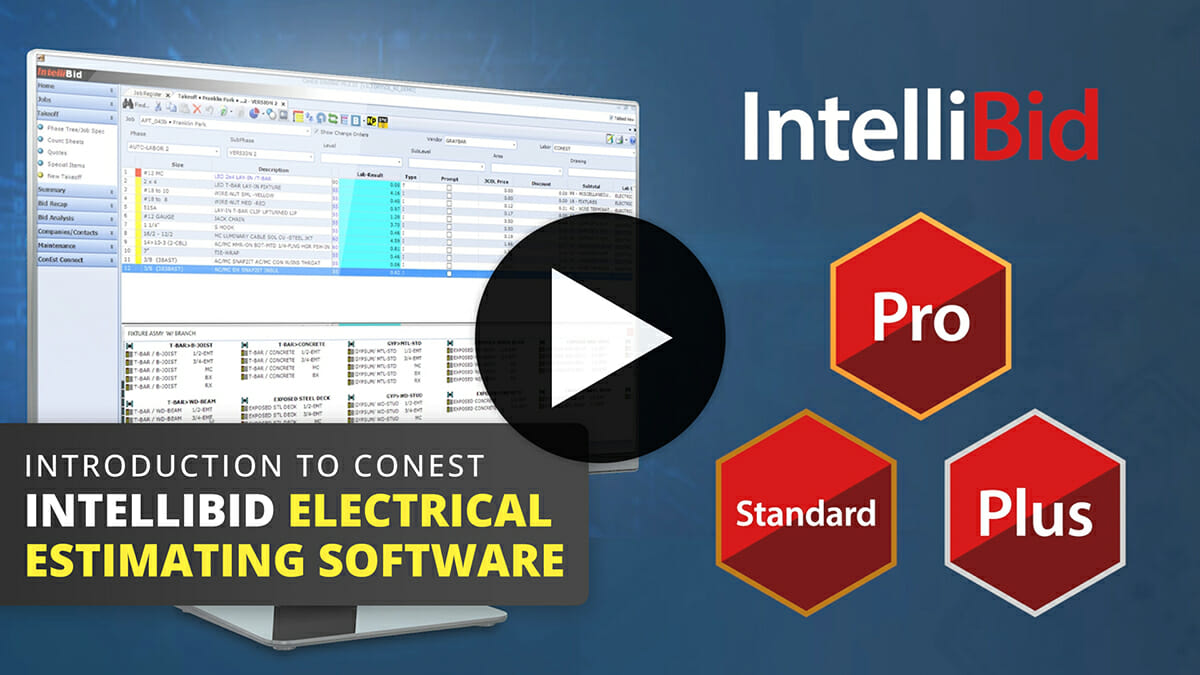How to Choose Electrical Estimating Software
In today’s fast-paced construction industry, electrical contractors face numerous challenges in accurately estimating project costs and managing their businesses efficiently. Fortunately, technological advancements have introduced electrical estimating software solutions that streamline the estimation process, improve accuracy, and enhance productivity. However, with the multitude of options available, choosing the right electrical estimating software can be overwhelming. This article serves as a comprehensive guide to help contractors make informed decisions when selecting electrical estimating software, ensuring they find a solution that meets their specific needs.
- Define Your Requirements: Before diving into the selection process, it’s crucial to determine your specific requirements. Consider factors such as the size of your business, the complexity of your projects, integration capabilities with other software, and the level of support needed. Clearly outlining your needs will help you narrow down the options and find a software solution that aligns with your objectives.
- Assess Features and Functionality: Each electrical estimating software comes with its unique set of features and functionality. Evaluate the following key aspects to ensure they meet your requirements:
- Takeoff and Estimating: Look for software that simplifies the takeoff process by allowing you to quickly measure quantities and generate accurate cost estimates.
- Material and Labor Management: Ensure the software offers comprehensive material databases and labor pricing options, enabling you to track and manage these aspects efficiently.
- Reporting and Documentation: Consider the reporting capabilities of the software, such as the ability to generate professional and customizable reports and proposals.
- Integration and Collaboration: Determine if the software integrates with other tools you use, such as accounting software or project management platforms. Collaboration features like sharing project data with team members are also essential for efficient workflow.
- Consider User-Friendliness and Training: User-friendliness is crucial to ensure a smooth implementation process. Look for software that has an intuitive interface and offers ease of use. Additionally, consider the availability of training resources such as tutorials, webinars, and customer support to help you and your team quickly adapt to the new software.
- Seek Customizable Database Features: One of the most important aspects of using an electrical estimating application is the ability to quickly add and edit items and assemblies for your takeoff. Many leading estimating software providers do not make this particularly easy, with some vendors noting that it can take up to a year to build or re-build an items and assemblies database. However, some providers like Conest Software do, with IntelliBid Estimating boasting a huge database and the ability to create custom items and assemblies on the fly.
- Evaluate Vendor Support and Reputation: Choosing a reliable vendor is vital for a successful software implementation. Research the vendor’s reputation, read customer reviews, and assess their level of customer support. A responsive and knowledgeable support team will be invaluable in case of any issues or questions that may arise during your usage of the software. You want a vendor that has a top notch support team that you can get on the phone quickly when needed.
- Look for Flexibility and Customization Options: Electrical contractors tend to use different materials and installation methods than other contractors. Make sure that you can change out materials in your estimating software to the ones your company actually uses. Things to look for include conduit hangers, cable connectors, wire connectors, fixture supports, etc.
- Seek the Ability to Make Labor Adjustments: Make sure the software can adjust for labor. Is there an adjustment for installing the same fixture or device dozens, or even hundreds of times? Once a crew gets going with a specific installation, they’ll get good at it. The savings in time can be a real competitive advantage when bidding new jobs. You also need to consider installation situations that will require a lot of time, such as installing fixtures or devices in buildings with many floors, or high off the floor.
- Test the Software: Before committing to a software solution, take advantage of free trials or demos offered by vendors. Testing the software firsthand will provide you with a better understanding of its capabilities, user experience, and how well it aligns with your specific needs.
- Consider Scalability and Future Growth: While your current needs are essential, it’s equally important to consider the long-term scalability of the software. Ensure that the chosen software can accommodate your business growth and adapt to evolving industry requirements, saving you from the hassle of switching solutions in the future.
Selecting the right electrical estimating software is a critical decision that can significantly impact your business’s success. By defining your requirements, evaluating features, considering user-friendliness and vendor support, testing the software, and planning for scalability, you can make an informed choice. Embracing technology and implementing a reliable electrical estimating software like Conest IntelliBid will streamline your estimating process, increase accuracy, and improve overall efficiency, ultimately giving your business a competitive edge in the construction industry.
Remember, investing time and effort into the selection process will yield long-term benefits, enabling you to enhance productivity, maximize profits, and deliver successful projects efficiently.



